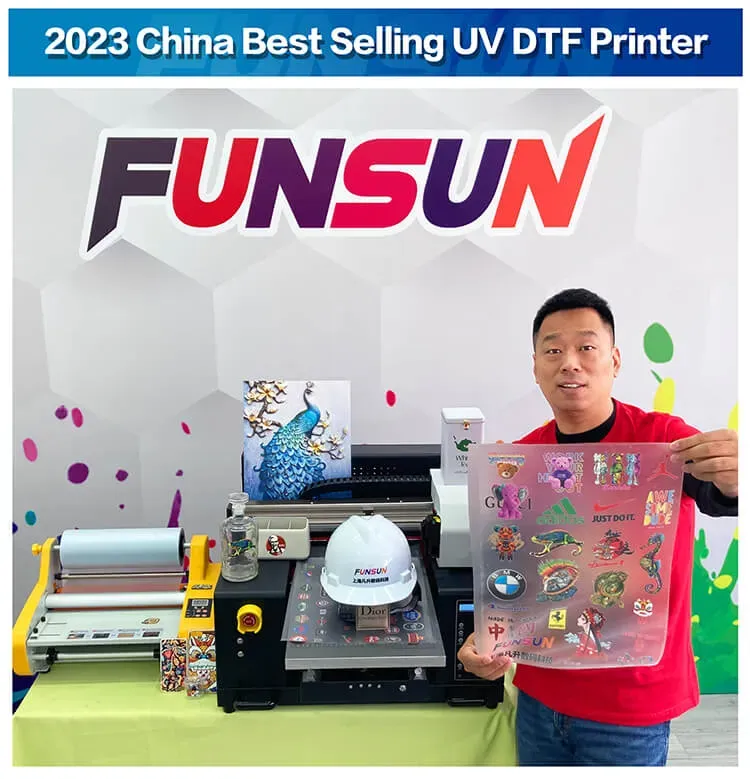UV DTF printing, or UV Direct to Film printing, is a groundbreaking printing technology that combines the efficiency of DTF printing techniques with the rapid curing capabilities of UV printing technology. This innovative approach not only enhances print quality but also opens the door to a myriad of UV printing applications across various substrates, making it an ideal choice for custom printing needs. Businesses can enjoy the remarkable benefits of UV DTF, including vibrant color output and superior durability that withstands the test of time. As more industries explore the advantages of this method, the demand for UV DTF printing is surging, highlighting its role in modern-day printing solutions. Whether you’re creating bespoke apparel or dynamic promotional products, UV DTF printing delivers exceptional results that truly stand out.
Introducing UV Direct to Film printing, a revolutionary method that merges the precision of direct-to-film processes with cutting-edge ultraviolet light curing technology. This technique, often referred to as UV transfer printing, harnesses the power of UV light to instantaneously dry inks, resulting in vibrant and durable prints. Its unique applications in custom printing have made it a preferred choice among businesses looking to elevate their branding and product offerings. From personalized clothing items to striking promotional materials, the versatility of UV DTF is transforming how companies engage with their customers. Explore the remarkable features and benefits that this advanced printing method brings to diverse industries.
Understanding the Basics of UV DTF Printing
UV Direct to Film (DTF) printing is a cutting-edge printing technology that merges traditional DTF methods with advanced ultraviolet light curing. This innovative technique involves the application of specialized UV inks that are cured instantly by UV light, rather than the heat transfer methods typically seen in conventional DTF printing. This leads to faster production times and the ability to print on a wide range of materials, from fabrics to metal. As the printing industry continues to evolve, understanding the fundamentals of UV DTF printing sets the stage for leveraging its advantages.
Beginners need to grasp the significance of UV light in this process. Unlike traditional inks that often require significant drying times, UV DTF prints are ready to be handled almost immediately after printing, opening up new possibilities for fulfilling urgent orders and expanding product lines. As such, grasping the basic mechanics of UV DTF printing not only enhances knowledge but is also essential for anyone looking to enter this dynamic industry.
Frequently Asked Questions
What is the main advantage of UV DTF printing compared to traditional DTF printing?
The main advantage of UV DTF printing is its immediate curing process. Using UV light, the inks dry almost instantly after printing, which significantly reduces production time. This allows for faster completion of custom printing orders, making it ideal for businesses facing tight deadlines.
What are some common applications of UV DTF printing?
UV DTF printing is incredibly versatile and can be applied in various areas, including custom apparel, promotional products, and outdoor signage. Its durability and vibrant color output make it suitable for creating high-quality prints on different substrates like plastic, textiles, and metal.
How does UV printing technology enhance the quality of printed products?
UV printing technology enhances the quality of printed products by using UV light to instantly cure inks, resulting in vibrant colors that do not bleed. This technique provides excellent durability against scratches and environmental damage, making it a preferred choice for long-lasting prints.
What should beginners consider before investing in UV DTF printing?
Beginners should consider several factors before investing in UV DTF printing, such as the cost of specialized equipment, the need for UV-compatible inks, and necessary safety measurements. Understanding these aspects is crucial for ensuring effective operation and optimal results.
What makes UV DTF printing beneficial for outdoor signage?
UV DTF printing is particularly beneficial for outdoor signage due to the durability of UV-cured inks, which are resistant to fading and environmental damage. This quality ensures that printed materials remain vibrant and legible, even under harsh outdoor conditions.
Can UV DTF printing be used for small-scale custom projects?
Yes, UV DTF printing is suitable for small-scale custom projects. Its rapid production capabilities and ability to print on a variety of materials make it an excellent choice for producing limited runs of custom items, such as personalized apparel or unique promotional products.
| Key Point | Details |
|---|---|
| What is UV DTF Printing? | Combines traditional direct-to-film methods with UV light technology to cure inks instantly, suitable for various substrates. |
| Benefits | 1. Immediate curing reduces production time. 2. Durability against scratches and fading. 3. Vibrant colors due to immediate drying. 4. Versatility for multiple materials. |
| Considerations for Beginners | 1. Higher equipment costs compared to standard printers. 2. Requires specialized UV inks. 3. Safety measures necessary due to UV exposure. |
| Applications | Custom apparel, promotional products, signage, and displays. |
Summary
UV DTF printing is a revolutionary printing technology that provides unmatched quality and efficiency for businesses. This innovative method utilizes ultraviolet light for instant ink curing, which not only speeds up production times but also enhances the durability and vibrancy of prints. With applications ranging from custom apparel to promotional items and signage, UV DTF printing opens new avenues for creativity and business growth. However, beginners should carefully consider equipment costs, specialized ink requirements, and necessary safety protocols. Embracing UV DTF printing can empower businesses to meet modern printing demands while ensuring a high standard of quality.



